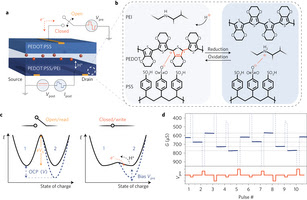High-performance, low-energy artificial synapse for neural network computing
by noreply@blogger.com (brian wang) from NextBigFuture.com on (#2DN5E)
A new organic artificial synapse made by Stanford researchers could support computers that better recreate the way the human brain processes information. It could also lead to improvements in brain-machine technologies.
"It works like a real synapse but it's an organic electronic device that can be engineered," said Alberto Salleo, associate professor of materials science and engineering at Stanford and senior author of the paper. "It's an entirely new family of devices because this type of architecture has not been shown before. For many key metrics, it also performs better than anything that's been done before with inorganics."
It mimics the way synapses in the brain learn through the signals that cross them. This is a significant energy savings over traditional computing, which involves separately processing information and then storing it into memory. Here, the processing creates the memory.
This synapse may one day be part of a more brain-like computer, which could be especially beneficial for computing that works with visual and auditory signals. Examples of this are seen in voice-controlled interfaces and driverless cars. Past efforts in this field have produced high-performance neural networks supported by artificially intelligent algorithms but these are still distant imitators of the brain that depend on energy-consuming traditional computer hardware.

Structure and electronic states of an organic neuromorphic device.
Nature Materials - A non-volatile organic electrochemical device as a low-voltage artificial synapse for neuromorphic computing
Read more










"It works like a real synapse but it's an organic electronic device that can be engineered," said Alberto Salleo, associate professor of materials science and engineering at Stanford and senior author of the paper. "It's an entirely new family of devices because this type of architecture has not been shown before. For many key metrics, it also performs better than anything that's been done before with inorganics."
It mimics the way synapses in the brain learn through the signals that cross them. This is a significant energy savings over traditional computing, which involves separately processing information and then storing it into memory. Here, the processing creates the memory.
This synapse may one day be part of a more brain-like computer, which could be especially beneficial for computing that works with visual and auditory signals. Examples of this are seen in voice-controlled interfaces and driverless cars. Past efforts in this field have produced high-performance neural networks supported by artificially intelligent algorithms but these are still distant imitators of the brain that depend on energy-consuming traditional computer hardware.

Structure and electronic states of an organic neuromorphic device.
Nature Materials - A non-volatile organic electrochemical device as a low-voltage artificial synapse for neuromorphic computing
Read more